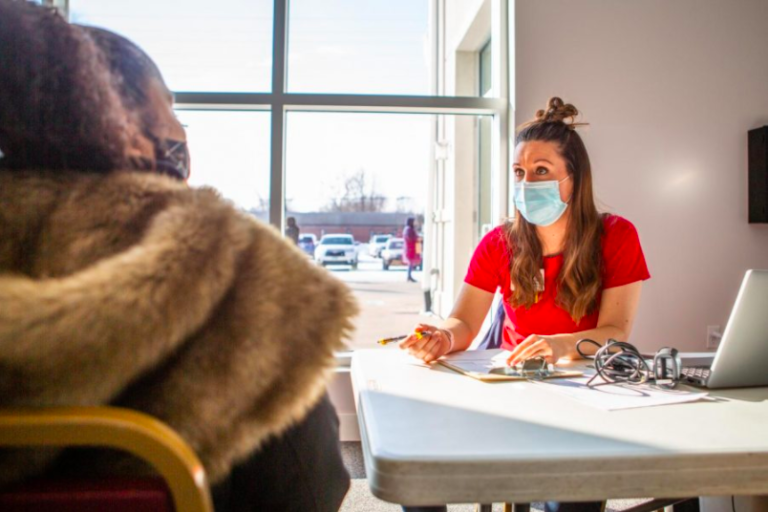Editor’s Note: A prior version of this story incorrectly stated the percentage of Black and Hispanic residents in Champaign County who are fully vaccinated. The correct values are now reported below.
CHAMPAIGN- When Dr. Wanda Ward, a University of Illinois employee with SHIELD CU, first heard that COVID-19 vaccines were being rolled out, she says she was skeptical.
Instead of leaping at the chance, Ward says she wanted to take her time.
“For those of us who come from adverse and vulnerable communities, you have to think carefully, ‘Is this going to serve me physically like it’s supposed to serve all members of our society?’” Ward says.
As a person of color, she understands the hesitancy among Champaign County’s community of color to get the COVID-19 vaccine.
Only about 25% of Black residents and 33% of Hispanic residents in Champaign County are fully vaccinated, compared to about 44% of White residents, according to data from the Champaign Urbana Public Health District.
The University of Illinois’ SHIELD CU team is partnering with local organizations to help boost those percentages.
These organizations include the CUPHD, the New American Welcome Center, the Champaign County Community Coalition, United Way, the local NAACP chapter and the local transit district.
“There really is strength in numbers,” Ward says.
Ward says there are many barriers to vaccinating the local community of color, which is why so many different kinds of local organizations are getting involved.
For example, because transportation to vaccination sites isn’t always available, SHIELD CU has partnered with the local transit district to offer free bus rides. Vaccines and tests will also be offered free of charge to alleviate financial stress for residents.
Ward says these efforts are necessary to overcome historical distrust of medical systems.
Due to a long history of mistreatment at the hands of the U.S. medical system, including events like the Tuskegee Syphilis Study— a medical study on African-American men with syphilis who were told they were receiving medical care and weren’t– and unnecessary hysterectomies of migrant women in ICE detention centers, she says people of color are often wary of new medical developments.
However, Ward says the fact that many people of color helped develop the vaccine should give some community members peace of mind.
“It requires diligence and vigilance to ensure fair and equitable health and safety to members of our community,” Ward says.
Ward says this problem isn’t just native to Champaign County– states across the U.S. are trying to make vaccines more accessible to people of color.
Although Ward herself had reservations at first, she says she ultimately made the decision to get vaccinated.
Now, she says many organizations and individuals are committed to helping make that decision an easy one for people of color.
“I have gotten fully vaccinated, my parents are fully vaccinated, my children are fully vaccinated, and that’s not a trivial matter,” she says.
More information on local vaccination sites is available on the CUPHD website.
Farrah Anderson is a student journalist for Illinois Newsroom. Follow her on Twitter @farrahsoa.

